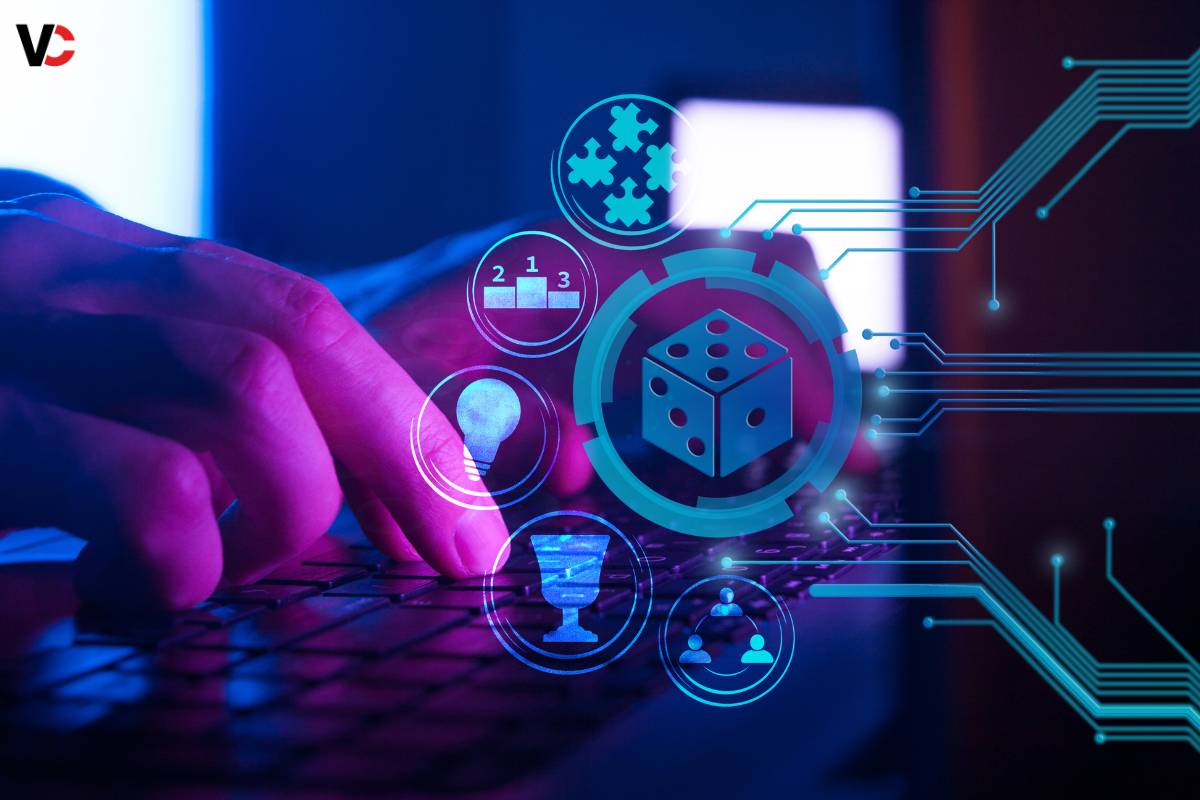It has been at the forefront of educational innovation, leveraging technology to enhance learning experiences. Among the many advancements shaping this field, animation and gamification stand out as powerful tools with the potential to transform how we teach and learn. In this comprehensive article, we will explore how animation and gamification can evolve the EdTech industry, examining their benefits, applications, and future promise.
The Current State of the EdTech Industry
Before diving into the specifics of animation and gamification, it’s essential to understand the current landscape of it. Over the past decade, the industry has seen significant growth, driven by the increasing demand for digital learning solutions and the proliferation of internet access and mobile devices.
Key Developments
- Online Learning Platforms: Platforms like Coursera, Khan Academy, and Udemy have democratized access to education, offering a wide range of courses to learners worldwide.
- Learning Management Systems (LMS): Systems such as Blackboard, Moodle, and Canvas provide comprehensive solutions for managing educational content, tracking student progress, and facilitating communication between educators and learners.
- Interactive and Multimedia Content: The incorporation of videos, simulations, and interactive quizzes has made learning more engaging and effective.
Challenges
Despite these advancements, it faces several challenges, including ensuring equitable access to technology, maintaining student engagement, and effectively assessing learning outcomes. This is where animation and gamification come into play, offering innovative solutions to these issues.
The Role of Animation in the EdTech Industry
Animation has long been a staple in entertainment, but its potential in education is only beginning to be fully realized. In the EdTech industry, animation can make complex concepts easier to understand, enhance engagement, and improve retention.
Benefits of Animation in Education

- Simplifying Complex Concepts: Animation can break down complicated ideas into manageable visual chunks, making them easier to comprehend. For instance, animations can illustrate scientific processes, historical events, or mathematical concepts in a way that static images or text cannot.
- Engagement and Motivation: Animated content is inherently engaging. The use of vibrant colors, motion, and storytelling can capture students’ attention and keep them motivated to learn. This is particularly beneficial for younger learners or those who struggle with traditional teaching methods.
- Improved Retention: Studies have shown that visual information is often better retained than text-based information. By using animation, educators can help students remember key concepts and details more effectively.
- Catering to Different Learning Styles: Animation caters to visual and kinesthetic learners, providing a dynamic way to absorb information. This diversity in teaching methods can help reach a broader range of students.
Applications of Animation in the EdTech Industry
1. Explainer Videos
Explainer videos use animation to simplify and explain complex topics. These videos can be used across various subjects, from science and math to history and literature. By combining narration with visual elements, explainer videos can make learning more accessible and enjoyable.
2. Interactive Simulations
Interactive simulations use animation to create immersive learning experiences. For example, in a virtual biology lab, students can conduct experiments and observe the results in real time. These simulations provide hands-on learning opportunities without the limitations of physical resources.
3. Storytelling and Narratives
Animation can be used to create educational stories and narratives that teach moral lessons, historical events, or scientific phenomena. Storytelling is a powerful educational tool, and animation enhances it by bringing stories to life in a way that captivates learners.
4. Gamified Learning Experiences
Animation plays a crucial role in gamification, which we will explore in detail in the next section. Animated elements, such as characters, environments, and interactive objects, make educational games more engaging and immersive.
The Impact of Gamification on the EdTech Industry
Gamification involves incorporating game design elements into non-game contexts to enhance engagement, motivation, and learning outcomes. In this industry, gamification has shown great promise in transforming traditional education methods.
Benefits of Gamification in Education
- Increased Engagement: Gamification makes learning more interactive and enjoyable, which can increase student engagement. By turning educational tasks into games, students are more likely to stay focused and motivated.
- Motivation and Rewards: Gamified learning often includes rewards, such as points, badges, and leaderboards. These elements can motivate students to complete tasks and achieve learning goals.
- Personalized Learning: Gamification allows for personalized learning experiences. By tracking student progress and adapting challenges to their skill level, gamified systems can provide a tailored educational journey.
- Skill Development: Educational games can help develop a range of skills, including problem-solving, critical thinking, and collaboration. These skills are essential for success in both academic and real-world settings.
Applications of Gamification in the EdTech Industry
1. Educational Games

Educational games are a primary application of gamification in the EdTech industry. These games cover various subjects and skills, from math and science to language arts and history. By incorporating gameplay elements, such as levels, challenges, and rewards, educational games make learning fun and engaging.
2. Gamified Assessments
Gamified assessments transform traditional tests and quizzes into interactive and enjoyable experiences. For example, students might earn points for correct answers, unlock new levels for mastering concepts, or compete with peers on leaderboards. This approach reduces test anxiety and encourages a positive attitude towards assessments.
3. Classroom Gamification
Classroom gamification involves applying game design principles to classroom activities and management. Teachers can create a gamified classroom environment by using points, badges, and leaderboards to reward student participation, behavior, and achievements. This approach fosters a sense of competition and collaboration among students.
4. Online Learning Platforms
Many online learning platforms are incorporating gamification to enhance the user experience. Platforms like Duolingo and Khan Academy use game elements to motivate learners, track progress, and provide instant feedback. This approach keeps learners engaged and encourages consistent practice.
The Future of Animation and Gamification in the EdTech Industry
As technology continues to advance, the potential for animation and gamification in the EdTech industry will only grow. Here are some trends and predictions for the future:
1. Advanced AI and Personalization
Artificial Intelligence (AI) will play a significant role in the future of the EdTech industry, particularly in enhancing animation and gamification. AI can analyze student data to create personalized learning experiences, adapting content to individual needs and preferences. For example, AI-powered platforms can recommend specific animated videos or gamified activities based on a student’s progress and performance.
2. Virtual Reality (VR) and Augmented Reality (AR)
VR and AR technologies will revolutionize the use of animation and gamification in education. These immersive technologies can create highly engaging and realistic learning environments. For instance, VR can transport students to historical events or scientific simulations, while AR can overlay educational content onto the physical world.
3. Collaborative Learning
Future advancements in it will likely focus on collaborative learning experiences. Animation and gamification can facilitate teamwork and communication among students, whether through multiplayer educational games or interactive simulations that require collaboration to solve problems.
4. Cross-Platform Integration
The integration of animation and gamification across various platforms will become more seamless. Students will be able to access gamified learning experiences on their smartphones, tablets, laptops, and even smart TVs. This cross-platform integration will ensure that learning is accessible anytime, anywhere.
5. Data-Driven Insights
Data analytics will become increasingly important in this industry, providing insights into student behavior, preferences, and learning outcomes. Educators and developers can use this data to refine and improve animated content and gamified systems, ensuring they are as effective and engaging as possible.
Challenges and Considerations
While animation and gamification offer significant benefits, there are also challenges and considerations to address.
1. Accessibility and Inclusivity
Ensuring that animated and gamified content is accessible to all learners, including those with disabilities, is crucial. This may involve providing alternative formats, such as captions for animated videos or keyboard controls for games.
2. Balancing Education and Entertainment

While gamification can make learning fun, it’s essential to maintain a balance between education and entertainment. The primary goal should always be to enhance learning outcomes, rather than simply providing entertainment.
3. Data Privacy and Security
As with any digital solution, ensuring the privacy and security of student data is paramount. Developers and educators must adhere to data protection regulations and implement robust security measures to safeguard student information.
4. Cost and Resource Constraints
Developing high-quality animated content and gamified systems can be resource-intensive. Schools and institutions must consider the costs involved and seek funding or partnerships to support these initiatives.
Conclusion
Animation and gamification are powerful tools that have the potential to revolutionize the EdTech industry. By making learning more engaging, interactive, and personalized, these technologies can address some of the key challenges in education today. The future of the EdTech industry will likely see even greater integration of animation and gamification, driven by advancements in AI, VR, AR, and data analytics.
As we move forward, it’s essential to embrace these innovations while also addressing the challenges they present. By doing so, we can create a more effective, inclusive, and enjoyable learning experience for students worldwide. It is on the cusp of a new era, and animation and gamification are at the heart of this exciting transformation.
Also Read: Top 10 Electronics Companies in the World in 2024


















